In this article, the methodology of choosing plants will be discussed in terms of what to look for and how this can affect seasonal planting. Some plants fair better in containers than others. For example, yews hate being restricted in pots for any length of time, and it will never flourish. Some plants hate root disturbance and therefore must be planted with great care (with kid gloves).
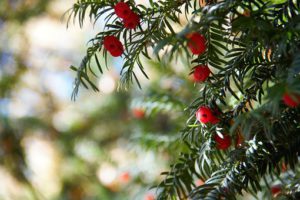
Otherwise, they will not take root and you will have plenty of losses through the year. In this post, we discuss what to look for when buying plants for containers, and the avoidance of any pitfalls which can take beautiful colourful containers and make them look substandard and unprofessional.
WHAT TO LOOK FOR
Good plants to look for in containers are quick to mature in producing flowers or fruit, but at the same time do not grow to ginormous proportions. They need to be of interest for a long period of time, can be neglected for a short period of time once it has been established, and they must not succumb to disease.
When buying plants at a garden centre, DIY shop, pound shops or any shop in general, look for plants that are just coming into bloom rather than those crowned in flowers. For perennials make sure that the leaves are healthy, and it is not wilting and that there are no diseases or pests present, which must be avoided at all cost even if it is on offer at half price.
WATCH OUT FOR NEGLECT
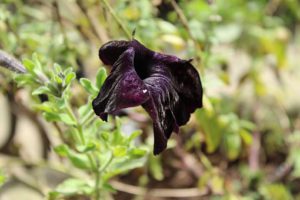
This is a sign of neglect and of poor plant management at the shop or garden centre. You also need to lift the plant from its pot to check the root system are well-formed and that the plant is not root bound.
If you want to avoid paying larger amounts of money for large plants later on in spring, then buy bedding/patio plants or tender perennials earlier in the growing seasons as seedlings, plugs or mini-plants.
LOOSEN THE ROOTS FOR GREATER PLANT SUCCESS
Remember to loosen the roots at the bottom of the plant to encourage them to grow into the new compost and not go round and round as it did in the original container, thus failing for the plant to establish. This is the commonest reason why plants fail in containers and must be avoided at all costs.
Choose right and your container will flourish, choose wrong or neglect your containers and the plants will die. Be wise with your plant selection, but be also bold and daring.
SEASONAL PLANTING
Use of bedding plants and bulbs such a crocus, daffodils, tulips, grape hyacinths, hyacinths, glory of the snow, iris and many more are a great way of introducing seasonal planting colours in containers and to ring the changes throughout the year.
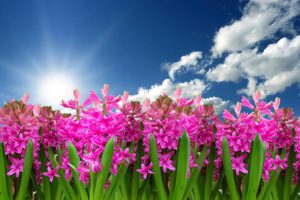
Many spring planted containers require careful planning, especially when hardy plants and bulbs that are planted in the autumn the year before. It is not advised to put in too much bedding as this could suffocate any bulbs that want to come through.
It is also not good to pack them in too tight, as this will not only ruin the aesthetics but will promote competition between the plant for water and nutrients.
SUMMER PLANTING
In summer planting the choice of plants that can be used is very extensive from brightly coloured flowers and foliage. The choice of what to use is up to the individual but remember that each plant must complement each other and not suffocate or fight amongst themselves. You could choose a colour scheme to contrast with each other or you could blend them into the background using subtle differences.
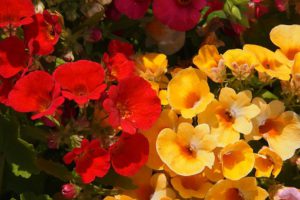
You could buy plug plants in bulk in summer such as marigolds, petunia, begonias, nemesia, busy Lizzies and many others but if you have the time and patience you can grow them from seeds planted in late winter/early spring. You can start them from pennies and you will have more choice of varieties that you can grow.
AUTUMN PLANTING- OUT WITH THE OLD IN WITH THE NEW
In autumn planting, the use of combining flowers and ivies and other hardy foliage plants such as ornamental cabbages can be all combined to produce a different display than the one used in summer. You can be original in your design throughout the growing season, saving some plants and discarding and replacing others.
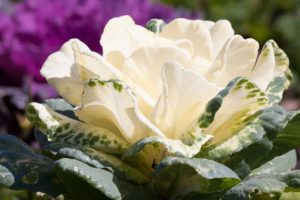
There is always a place for violas and pansies that can be used through autumn until February the following year. So in effect, you can have a bedding plant in containers throughout the whole of the year including winter.
One interesting fact is that summer pansies and winter pansies are exactly the same plant but planted at different times of the year. Pansies are hardy perennials but in fact are often treated as annuals, where new plants are planted every year.
USE OF PLASTIC POTS TO CHANGE DISPLAY
If you want to have a plant display throughout the different seasons, you can use liners which are plastic pots or troughs that slot into the same container, allowing the previous display to be replaced with ease by a new display. In effect, you can be a man or woman for all seasons.
If you have any questions or comments that you want to make, please feel free to do so at the bottom of this post.
Thank You.


Interesting article .As I was given a plant that was already matured from the Caribbean . I was told to put it close to the window so it can get sunlight which natural. This plant is about 6.2 ft tall . It does take alot of water . I give it about 1 litre of water .Sorry I do not know the name of it but seems to have grown since I took possession of it . I also water it every other day or it just get dry in the base of pot it is sitting in. And then leaves start to wilt or just fall to the ground . This plant has become like a pet minus the cage and the need for exercise outside .Thanks for the share
Thanks For the generous comment Erik. The problem of why plants drop leaves is multi-fold from under watering to overwatering. It could also be due to draughts, under or overfeeding, First I would make sure that the compost is not overly wet or too dry. It may not be happy with its current location and may benefit from being moved to a more sunnier spot if in the shade or the shade if it is in a sunny spot. indoor plants also do not like direct heat from central heating, so move away if it is too close to one.
Hope that helps
Antonio
Thank you for a great article. I am a novice gardener always looking for information so I do not kill or neglect my chosen few indoor plants.
Hi Donna
Thank you for the kind comments and I hope you keep visiting the site to get more info for your indoor garden.
Thanks
Antonio
I love gardening but don’t really know much about planting and buying plants at the best time. So thank you for giving me some tips that I’ll definitely use this summer.
Thanks Nick
Getting the container to look good throughout the year is difficult, but I hope that this article has shown too you that it is not difficult as it seems to be.
Antonio